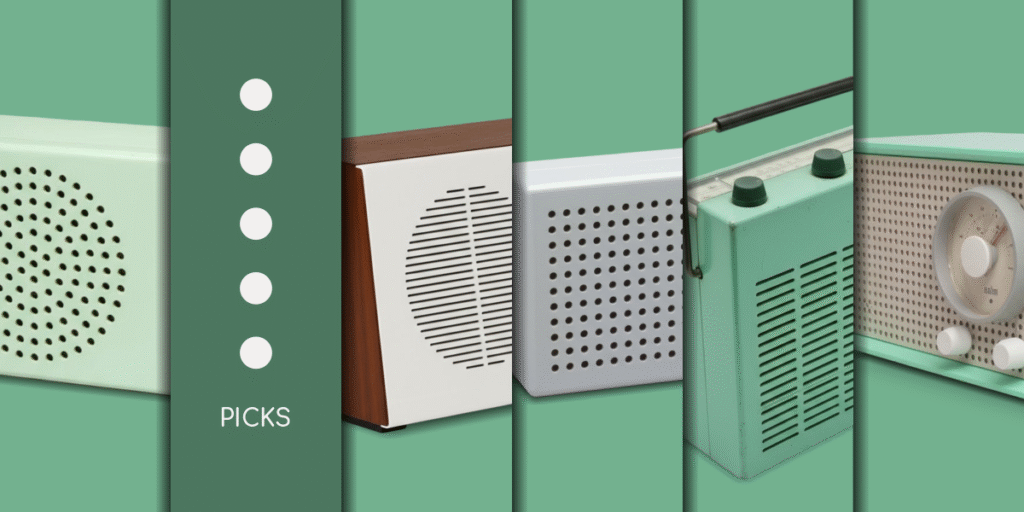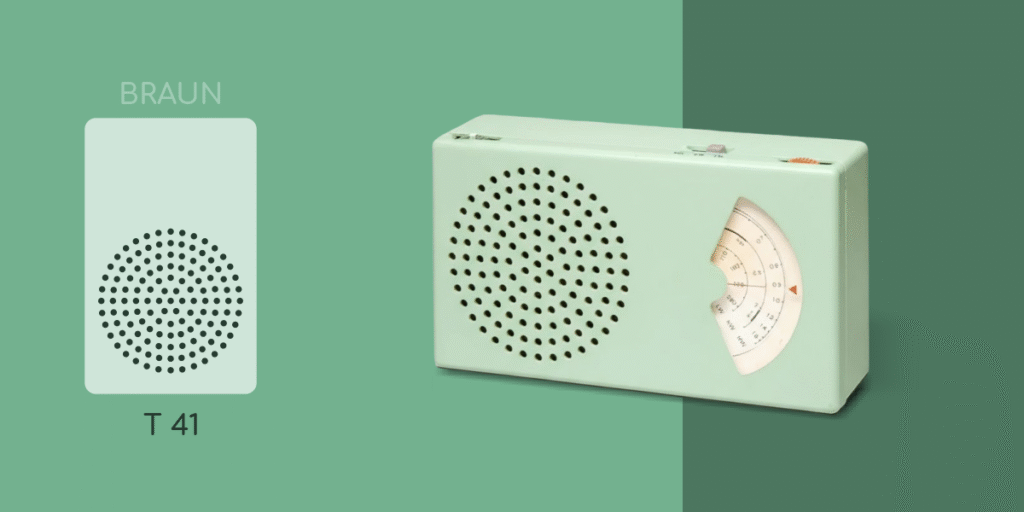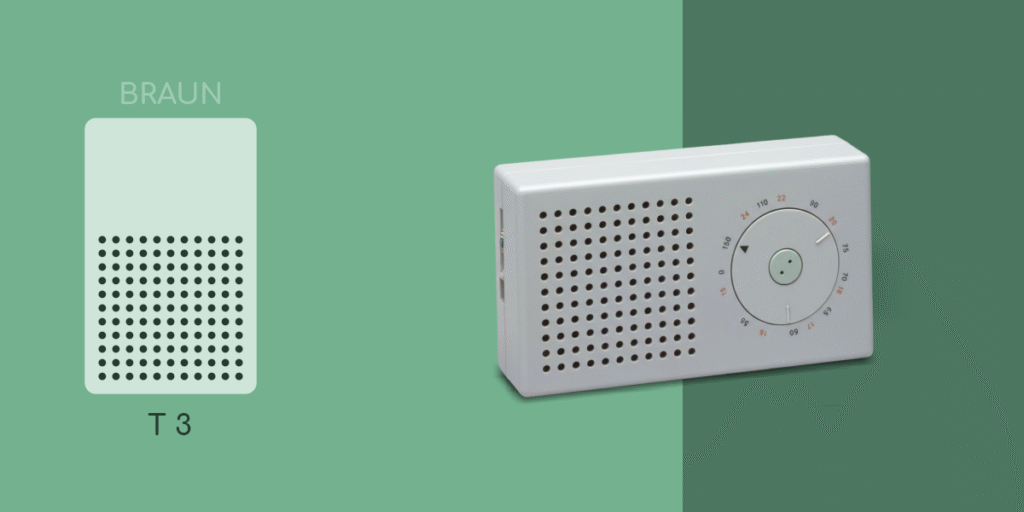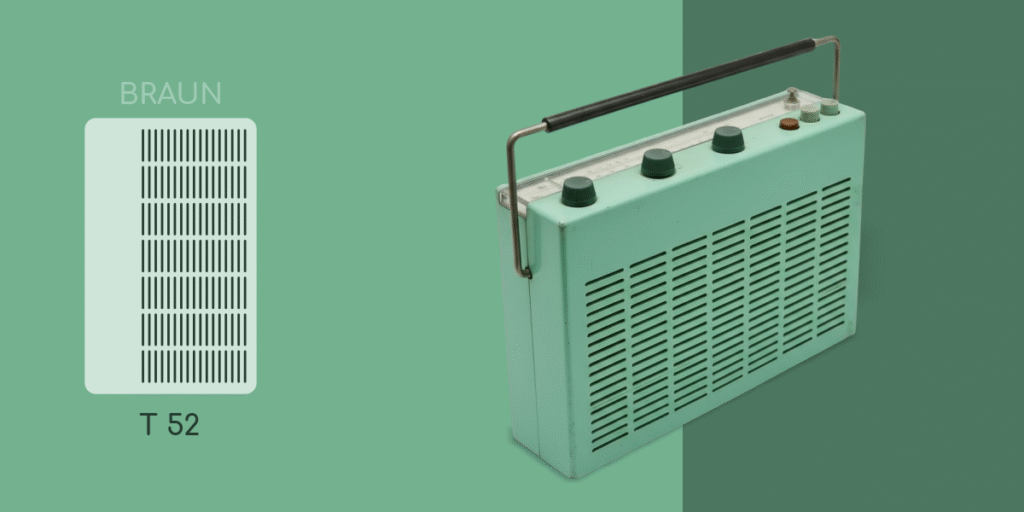“Video killed the radio star,” but it never killed the radio design. Timeless in form and function, Braun radios remain some of the clearest expressions of modern design. At the heart of this legacy stands Dieter Rams, who transformed everyday electronics into objects of lasting clarity.

1 Braun T41
Introduced in the mid-1950s, the Braun T41 was among the first radios shaped by Dieter Rams’s emerging design language. Its mint green body, circular speaker grille, and clear tuning dial showed how restraint could replace ornament. Every element was reduced to its role, yet the result felt fresh and approachable.
The T41 was not just a technical device, it was an everyday companion. Rams’s goal was to make objects that blended quietly into life while remaining a pleasure to use. The clarity of its form turned a household radio into a piece of modern design, proving that beauty could be born from simplicity.

2 Braun RT20
The Braun RT20 brought Rams’s language of clarity into the home. Its design combined a warm wooden casing with a crisp white front panel, balancing modern simplicity with a sense of familiarity. The vertical tuning scale and circular speaker grille were arranged with careful proportion, giving order to everyday use.
The RT20 shows Rams’s ability to unite tradition and modernity. It felt both contemporary and timeless, a piece of furniture as much as an electronic device. This balance made it more than a radio, it became part of the living room, proof that design could be useful, honest, and quietly beautiful.

3 Braun T3
Released in 1958, the Braun T3 was a pocket radio that carried Dieter Rams’s philosophy into everyday life. Its form was reduced to a simple rectangle, with a clear speaker grid and a single circular dial. Nothing more, nothing less.
The T3 showed how modern design could be small, affordable, and personal. It was not only functional but also approachable, an object that fit naturally into the hand and into daily routines. Decades later, its influence became unmistakable when Apple’s first iPod echoed its form, proving that Rams’s clarity was not bound to a single era.

4 Braun T52
Designed in the early 1960s, the Braun T52 carried Rams’s design philosophy into a portable form. With its mint green body, slim profile, and simple handle, it was made to move with the user while remaining clear and functional. The horizontal grille and discreet controls gave it a calm, ordered appearance that did not overwhelm.
The T52 reflected Rams’s belief that design should be unobtrusive. It served its purpose without calling attention to itself, yet its restraint gave it lasting appeal. Even today it feels modern, proof that when objects are reduced to what is essential they remain relevant across generations. This radio is a quiet demonstration of the Ten Principles of Good Design that we explored in Dieter Rams Design Principles: Less but Better.

5 Braun SK25
The Braun SK25, introduced in 1955, is one of the clearest examples of Dieter Rams’s early approach to design. Its white front panel, precise speaker perforations, and clean layout reduced the radio to its essentials while keeping it approachable. Nothing was decorative, yet the result felt harmonious and modern.
The SK25 became more than a household device. It stood as proof that everyday objects could embody clarity and proportion, qualities that remain central to modern design. In its simplicity we can see the lasting influence of Bauhaus, where form and function were always connected. For more on Bauhaus, read the article Bauhaus: The Lasting Influence.
